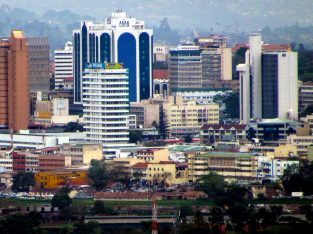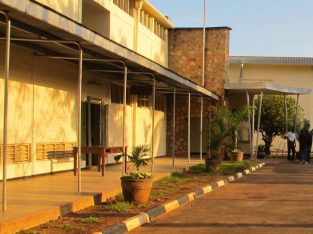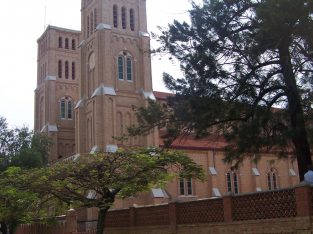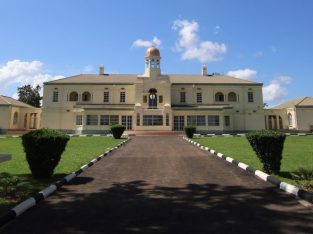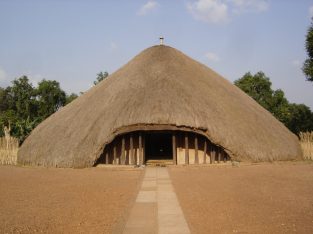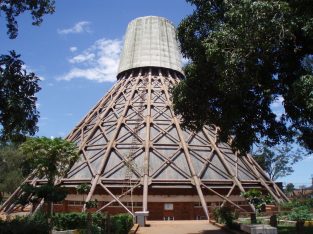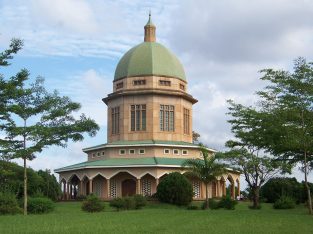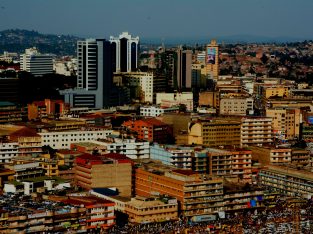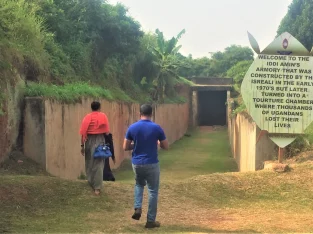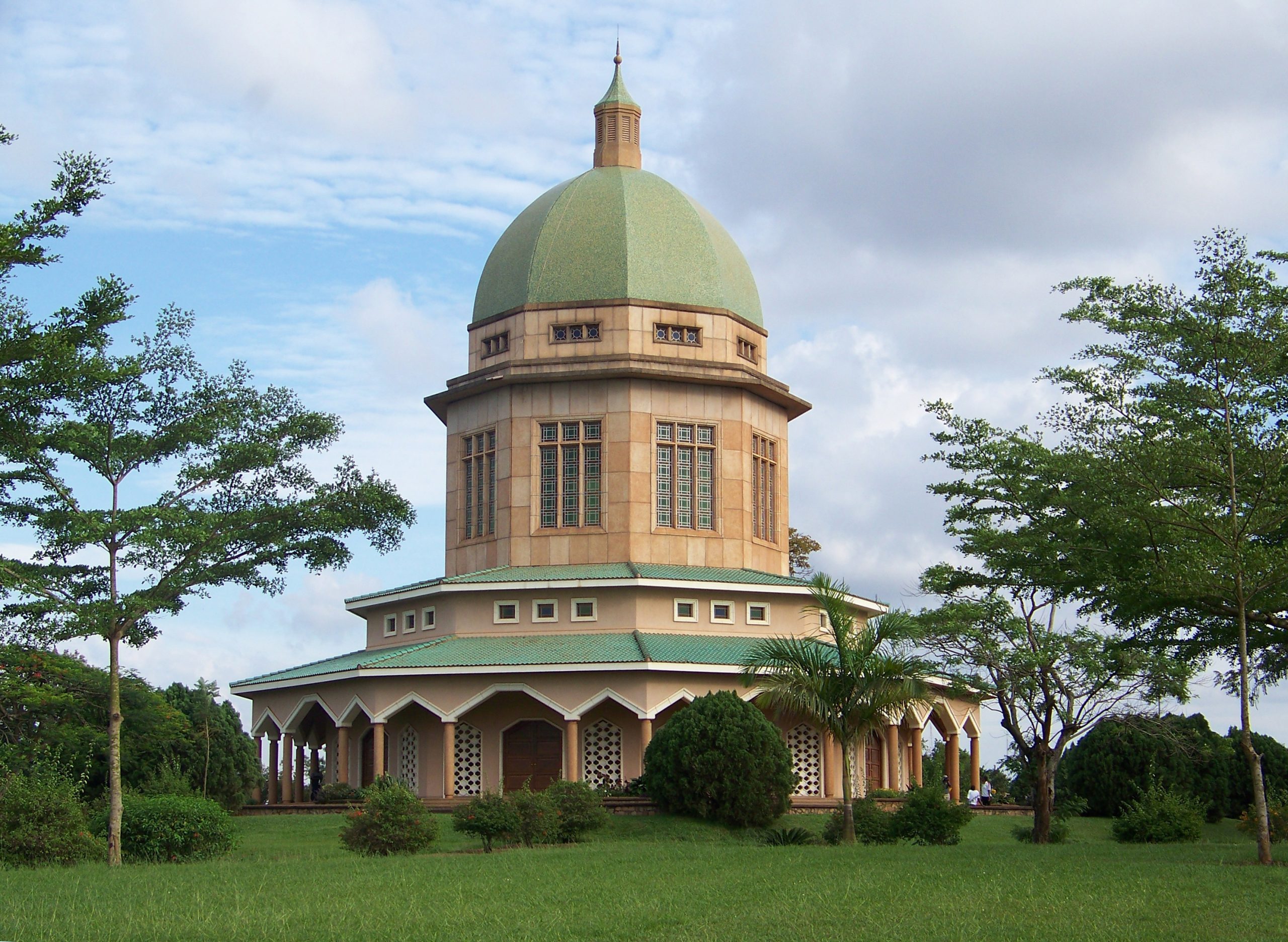Kampala City Tour
The Baha`i Temple (Mashriq I'-Adhkar), located in Kampala, serves as a spiritual gathering place for people from all over the world. Uganda became one of the first Bahai communities in Eastern Africa when the Baha'i faith was introduced in 1951. The Baha'i Temple in Uganda was built between 1958 and 1961 on Kikaya hill, four miles from Kampala on Gayaza road. It stands 124 feet tall and has an interior diameter of 84 feet. It has a 265-foot circumference and sits on a 55-hectare property. It was the African continent's first Bahai house of worship, and it has become a well-known landmark in Kampala due to its natural setting of beautiful fruit trees.
Each continent has only one Bahai Temple, and Uganda is Africa’s spiritual heart for the Bahai, with the Mother Temple in Kampala and over ten Bahai centers spread across the country. The Bahai Temple in Uganda is the only one in Africa, with the others located in the United States, India, Panama, Chile, Germany, Australia, and Samoa.
Iranian-born Baha’u’llah established the Bahai faith in 1844. His name, Baha’ullah, is Arabic for “God of Glory.” According to his writings, heaven and hell are not physical locations but rather states that a person can achieve via good or bad deeds. The Baha’i believes that paradise is the possession of spiritual characteristics while hell is the absence of these qualities or imperfection.
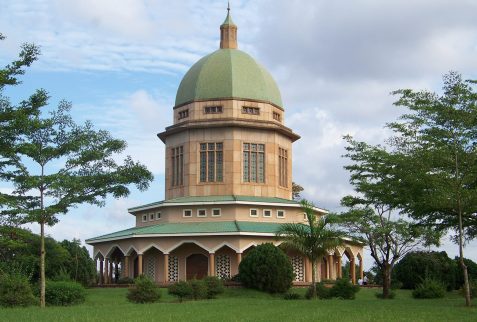
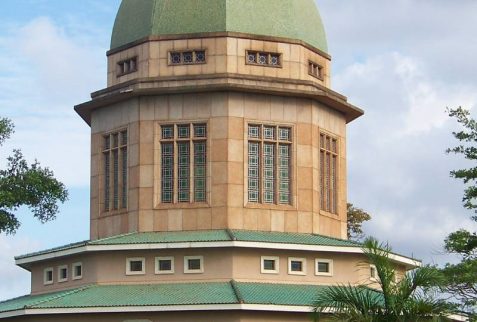
The Bahai Temple has a distinctive architectural design that stands tall in the center of a green conical dome shape made of tiny glazed mosaic tiles from Italy, 9 large pillars, and 27 smaller pillars that support the temple’s uprightness. The Bahai Temple has nine doors, which represent the nine ways or religions whose messengers Bahai followers believe in, and the doors are always open during prayer and meditation sessions where the followers speak to embrace God’s nature. The Bahai Temple has a daily minimum of three prayers where people gather to worship God beneath this dome, which represents his divine uniting force.
The Bahai holy law does not specify a specific day of the week for the temple to gather. Therefore, Baha’i adherents are free to choose whichever day is most convenient for them; however, those in Kampala typically go on Sundays. On major days like the two-day celebration of the birth of Baha’u’llah and Bab, which occurs in either October or November, the temple usually fills up. Additionally, rather than baptizing new converts and children who turn 15 like other religions do, it declares them with declaration cards.
The sacred books of the Bahai faith may be read in the place of worship during prayer in any language, without sermons or musical accompaniment. The lower roof tiles came from Belgium; colored glass from Germany; steel window frame fittings from Britain; wood; and branches for doors and walls made of pre-cast stone quarried in Uganda, among other components that came from many nations during construction.
The Bahai Temple has a distinctive architectural design based on a spiritual vision thanks to the flower gardens that decorate its entrance doors. The Bahai Temple’s interior features a higher platform, similar to that of other religions; three rows of assembled wooden pews facing one side of the circular temple; lighting from enormous windows that are multicolored; and there are no pictures or statues inside because the Bahais believe that God is the source of all beauty.
Good to Know
Country
Visa Requirements
Languages spoken
Currency used
Visitors who visit the Bahai Temple fall in love with prayer the moment they step inside because of its stillness and serene surroundings. However, there are rules that must be adhered to, including the fact that the temple is open every day to everyone and welcomes individuals of all faiths because its primary goal is to foster interfaith harmony because all religions hold that God exists. It is not permitted to take pictures within the temple. While within the temple, phones must be turned off or put on mute. The temple is a place of worship, so it is forbidden to consume substances like alcohol and narcotics there.
Visitors to the Bahai Temple can participate in a variety of activities, including:
Children’s classes: in these classes, youngsters from nearby towns and schools can learn about the Baha’i faith. Study the religious literature of the Baha’i religion, which asserts that spiritual education is the core of a process of education that results in the change of the human spirit. Followers of the Baha’i faith believe that each kid is special and has gifts from God. As a result, they impart many teachings, such as the need to memorize quotes, as well as those through storytelling, music, art, and games. At the Baha’i Temple, young people are taught values that they can employ in their daily lives and that will advance their spiritual development. These values include kindness, truthfulness, dependability, unity, love, and justice. They are also taught about the oneness of God, humanity, and religion.
Juniors Classes: Young people between the ages of 11 and 14 go camping at the Bahai Temple and engage in or are involved in youth classes there that help them grow intellectually and spiritually. The youth are taught how to make moral judgments, comprehend the spiritual code of behavior, live by the spiritual kings, express their strength via drama, art, and craft, and sing, among other things.
Study groups: The Baha’i community created a number of courses to assist people in developing a conscious foundation for responding to their community’s needs. Small groups might hold study circles with a tutor to speed up the learning process. The classes are made up of readings that are broken down into three units: the first unit covers understanding the Bahai writings and explains why believers should read the holy texts; the second unit covers prayer and explains the advantages of praying; and the third unit covers life and death and covers topics like the meaning of life, the nature of the soul, and the state of the soul after death, among others.
Devotional gatherings or meetings are events when people get together to pray together as a community to enhance the Baha’i faith. Families or neighbors who live in the same building will come together to pray, sharing personal tales and listening to music that reflects their varied musical tastes. However, the fundamental goal is to bring believers together spiritually via the strength of their collective prayer.
Due to its natural setting with a variety of tree species and flowers, bird watching is possible at the Bahai Temple. Eight different bird species may be seen in Bahai Temple, and they shelter in the surrounding trees. The visitors will hear the sweet sounds of birds while in the gardens and will also be able to see some birds, such as the Red-billed fire finch, Ross’s Turaco, Black kite, Great Blue Turaco, Stripped kingfisher, Bronze Sunbird, Grey woodpecker, Palm-nut vulture, Grey parrot, Brown parrot, Black and white casqued hornbill, Pied crow, and Hadada ibi.
The Baha’i Temple engages the community in a variety of activities to promote peace, educates them about the Bahai faith at the local council level, develops social amenities around the temple by the administrators, and has plans to construct schools and other facilities on the Bahai Temple grounds. The Baha’i Temple is an excellent location for family outings, picnics, worship, and praise. Visitors can enjoy the tranquility, stunning scenery, and green gardens for relaxation, a break from the busy city, bird watching, and nature walks in the gardens, among other activities that make for an unforgettable experience.
